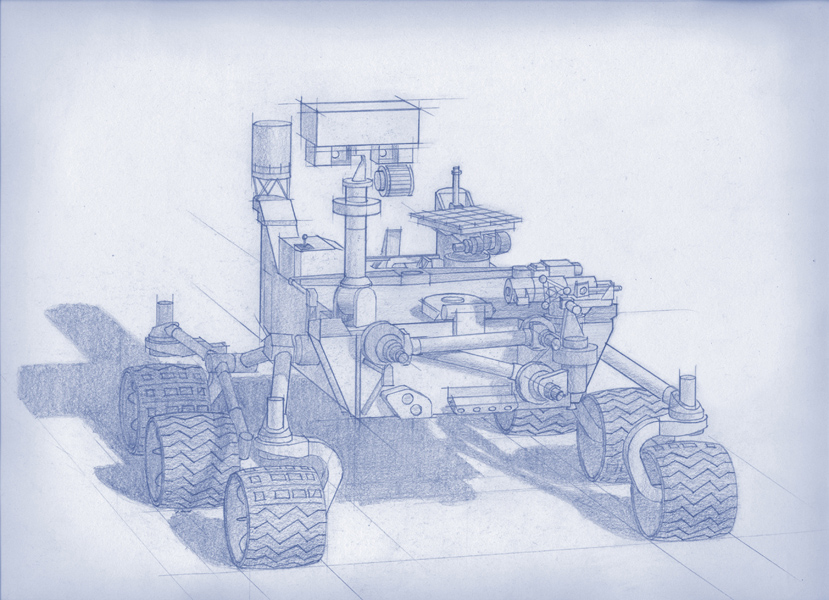NASA wants investigations for a Mars 2020 rover
October 1, 2013

Planning
for NASA’s 2020 Mars rover envisions a basic structure that capitalizes
on the design and engineering work done for the NASA rover Curiosity,
which landed on Mars in 2012, but with new science instruments selected
through competition for accomplishing different science objectives
(credit: NASA/JPL-Caltech)
The Mars 2020 rover will explore and assess Mars as a potential habitat for life, search for signs of past life, collect carefully selected samples for possible future return to Earth, and demonstrate technology for future human exploration of the Red Planet.
Officially called the Mars 2020 Mission Investigations Announcement of Opportunity (AO), this competition solicits flight investigations for which each principal investigator or scientist is responsible for a complete space flight investigation, including instrument hardware, mission operations and data analysis. T
he total allocated cost for development of all the investigations selected and funded by NASA is approximately $130 million.
The competitively selected instruments will be placed on a rover similar to Curiosity, which landed on Mars in August 2012. Using Curiosity’s design will help minimize mission costs and risks and deliver a rover that can accomplish the mission objectives. The Mars 2020 mission also would build upon the scientific accomplishments of Curiosity and other previous Mars missions.
What’s different about Mars 2020
In January 2013, NASA appointed a Science Definition Team to outline objectives for the Mars 2020 mission. The team, composed of 19 scientists and engineers from universities and research organizations, proposed a mission concept that could accomplish several high-priority planetary science goals and be a major step in meeting President Obama’s challenge to send humans to Mars in the 2030s.
According to the Science Definition Team, looking for signs of past life is the next logical step.
“The Mars 2020 mission will provide a unique capability to address the major questions of habitability and life in the solar system,” said Jim Green, director of NASA’s Planetary Science Division in Washington. “The science conducted by the rover’s instruments also would expand our knowledge of Mars and provide the context needed to make wise decisions about whether to return any collected samples to Earth.”
This rover will make measurements of mineralogy and rock chemistry down to a microscopic scale, so that we might be able to understand the Martian environment surrounding the rover’s landing site and identify evidence of possible past life.
The 2020 rover could also make measurements and conduct technology demonstrations to help designers of a human expedition understand any hazards posed by Martian dust and demonstrate how to collect carbon dioxide, which could be a resource for making oxygen and rocket fuel.
“The Mars 2020 rover will test technologies that are key to one-day landing human explorers on the Red Planet,” said Jason Crusan, director of NASA’s Advanced Exploration Systems Division. “New technologies could allow astronauts to live off the land as they explore the ancient valleys of Mars. The capability to manufacture breathable air, rocket fuel, water and more may forever change how we explore space.”
(¯`*• Global Source and/or more resources at http://goo.gl/zvSV7 │ www.Future-Observatory.blogspot.com and on LinkeIn Group's "Becoming Aware of the Futures" at http://goo.gl/8qKBbK │ @SciCzar │ Point of Contact: www.linkedin.com/in/AndresAgostini
 Washington
Washington